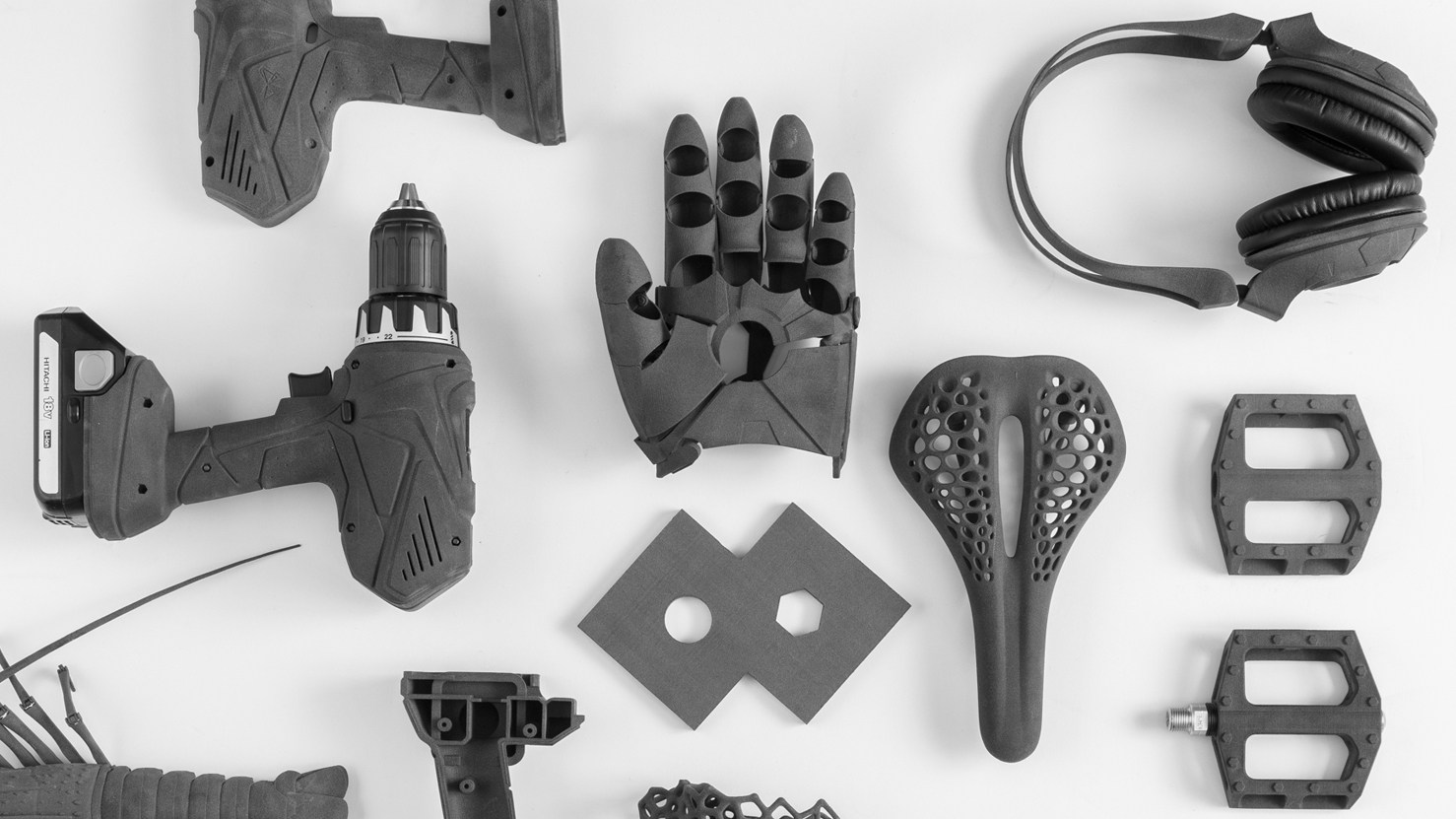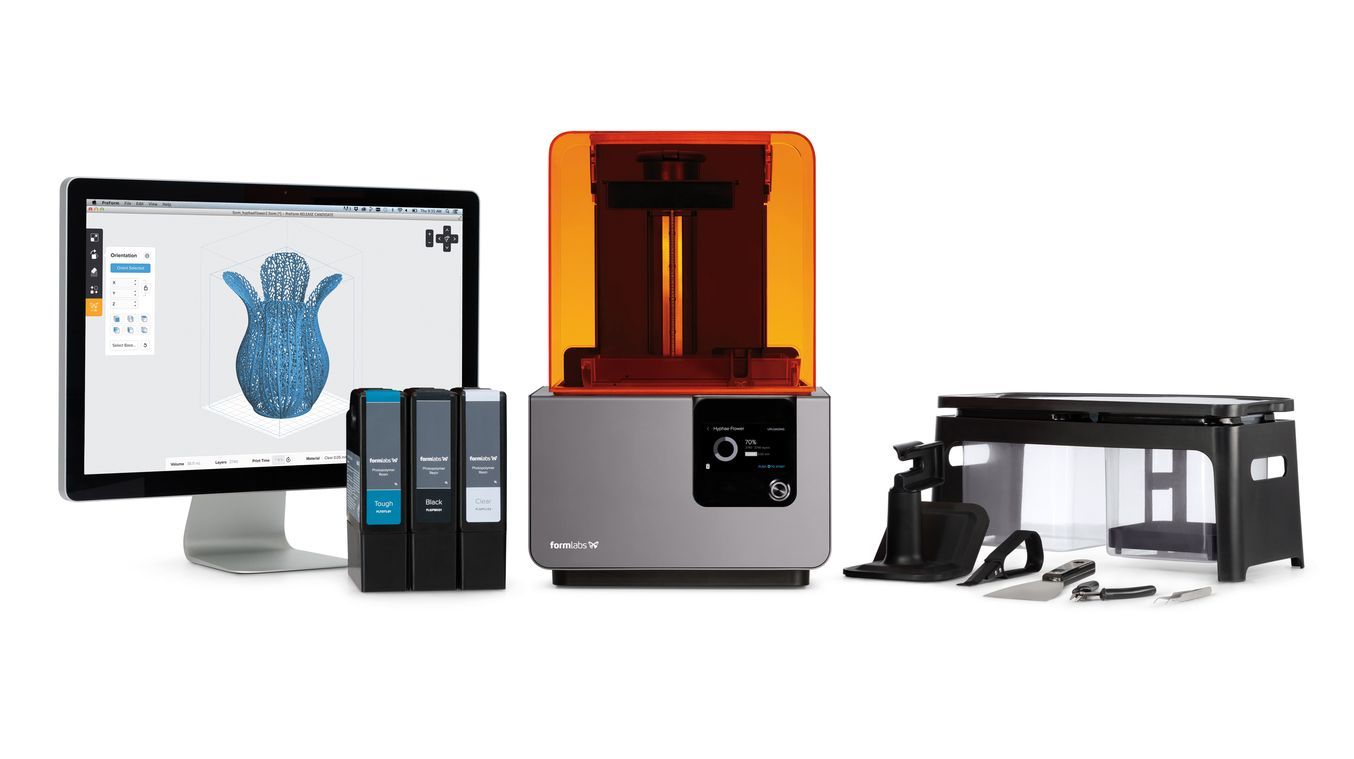
The 4th Dimension is a new series where we go behind the scenes with leaders in 3D printing to add a new dimension.
Our Dan Slaski interviews Ryan Turk, Business Development Lead at Formlabs, and nerds-out on 3D printing. And nerd-out they did.
Dan Slaski: Can you provide a brief intro to Formlabs and your products?
Ryan Turk: Formlabs is a company that makes the most advanced 3D desktop printer ever. It has grown from a Kickstarter-funded startup to what is now the world’s biggest private 3D printing company. Despite that fact, we haven’t wavered from our customer-focused approach to designing amazing tools for creators. Our product range focuses on two “print engines”. The first is the Form 2, which is a desktop stereolithography machine that can print using a range of functional and aesthetic materials and results in high resolution, high accuracy, smooth prints. Our second print engine is the Fuse 1 selective laser sintering machine, which sinters nylon powder to create highly functional parts without the need for supports, which results in a uniform texture on the part.
Dan Slaski: Tell me about yourself and your role at Formlabs?
Ryan Turk: I am an Atlanta native and graduate of Georgia Tech in mechanical engineering. I served 8 years in the Navy as a submarine officer, deploying four times to the Western Pacific. While transitioning from the Navy, I founded and ran a startup that designed and manufactured custom-fit diving masks using 3D scanning and a proprietary 3D printing mold process. After exiting that company, I joined Formlabs to lead a business development team focused on new markets.

Dan Slaski: The flavor of additive manufacturing technology most widely available to general consumers is Fused Deposition Modeling (FDM). FDM machines are the most common in the home 3D printing market and makerspaces. They work by feeding a spooled thin plastic rod through a hot nozzle, extruding a melted bead that gets drawn layer by layer. A glorified hot glue gun. The materials frequently used are a corn-based or Lego plastic.
I have heard your technology described as “shooting lasers at goo”. Can you give a more eloquent but still highly oversimplified description of how your machines create parts?
Ryan Turk: Slinging lasers, as we like to say. In stereolithography, a vat of liquid resin sits above an optics system consisting of a UV laser and two small aiming devices called galvanometers. This laser beam traces across the bottom layer of the resin in the same cross-sectional way that a FDM deposits material. The UV laser cures the photopolymer resin and a “layer” is formed. The build platform increments upward and the process repeats. The part is built from the bottom up.
Dan Slaski: What are the advantages of your technology?
Ryan Turk: There are three primary advantages to the technology: 1) Isotropic parts, i.e. the part is solid and uniform throughout. This is important because the material’s mechanical properties are uniform throughout the part. 2) Surface finish. At the lowest step height of 25 microns, an SLA part printed on the Form 2 is nearly indistinguishable from an injection molded part, it’s perfectly smooth. 3) Precision. The laser spot size on the Form 2 is 140 microns and can be accurately positioned anywhere on the build plate. This results in high part accuracy and very small minimum features.
Dan Slaski: I did some snooping on Glass Door. Besides having a favorable overall rating, I was reading about Formlabs’ great perks and fun startup culture. One of the perks is, of course, unlimited free 3D printing. What makes being an employee there different from other jobs?
Ryan Turk: Formlabs is indeed a great place to work and has retained its “start-up-y culture”. For example, lunch is catered 3 days a week, dogs are allowed in the building, 3D printers are literally everywhere, all full-time employees receive equity as part of their compensation, and there is a no-policy vacation policy. Add to this a diverse and intelligent workforce. I like to say that you can’t swing a dead cat without hitting someone from a unique background (submarine officer, founder of an orphanage) or someone with an impressive degree (like a PHD in cognitive neuroscience on the marketing team).
What makes working here unique can be summed up in two ways: everyone is so smart it requires you to step up your game, and everyone believes in what we are doing: empowering creators.
Dan Slaski: Follow up question. To whom should I send my resume?
Ryan Turk: Need to get back to you on the right contact, there are several that could work.
Dan Slaski: From an outsider’s perspective, the 3D printer space seems volatile and fickle. There are a lot of players and a high attrition rate. Add in challenges of designing a highly multidisciplinary product and complex intellectual property considerations and so on. Is this an accurate portrayal? What drives Formlabs to push through these obstacles? Is Formlabs a success in spite of these challenges or does it thrive on them?
Ryan Turk: I think this is accurate to a point, but the trend is diminishing. Six to seven years ago was the peak of the hype: Makerbot and Formlabs were a big part of that and thus featured in the documentary, “Print the Legend”. There was a flood of entrants to the market, driven by the expiration of patents on FDM and SLA technology (followed soon by SLS). Back to your point, many companies did not anticipate the organizational costs of designing, developing, selling, and supporting a complex product. For example, many companies built their entire business model around an inexpensive machine, with a strategy to grow customer lifetime value through sales of consumables, etc. The market has proven that it is impossible to support an engineering, design, and support staff selling a sub-$1000 3D printer. The mass market that was expected to grow up around these machines never happened.
Today, there has been significant attrition, but I wouldn’t characterize it as volatile or fickle. The big players still remain. The newer entrants are well-funded and have clear strategies and markets.
My perception of how Formlabs pushed through this is by having immense technical talent from the very beginning, a connection and geographic proximity to MIT, and awareness that a race to the bottom was a losing strategy. Rather than focus on cost, we’ve focused on product quality and services. It helps that as companies shuttered, we attracted their best talent!
Read the rest at SolidSmack.com

